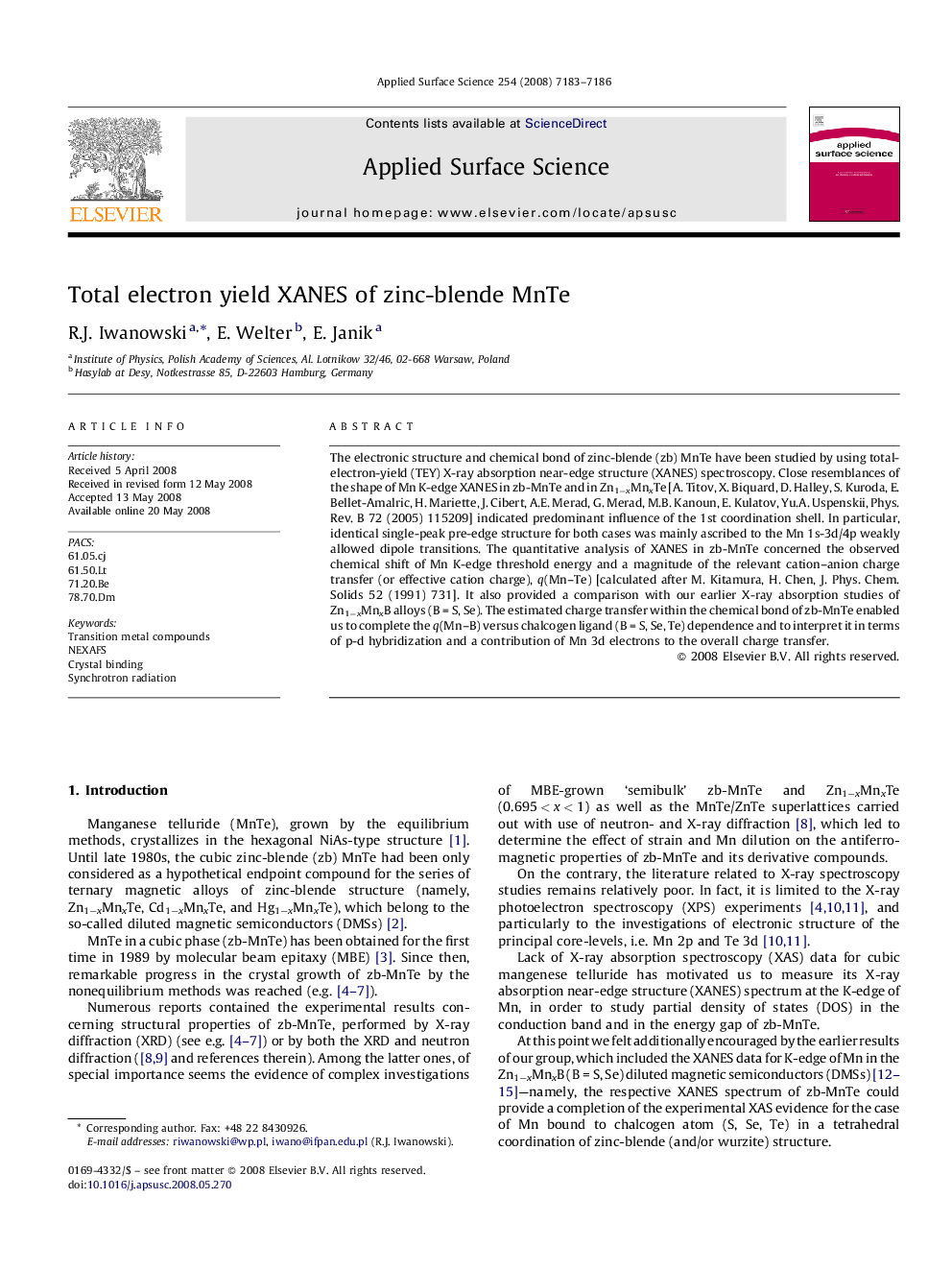| Article ID | Journal | Published Year | Pages | File Type |
|---|---|---|---|---|
| 5361065 | Applied Surface Science | 2008 | 4 Pages |
Abstract
The electronic structure and chemical bond of zinc-blende (zb) MnTe have been studied by using total-electron-yield (TEY) X-ray absorption near-edge structure (XANES) spectroscopy. Close resemblances of the shape of Mn K-edge XANES in zb-MnTe and in Zn1âxMnxTe [A. Titov, X. Biquard, D. Halley, S. Kuroda, E. Bellet-Amalric, H. Mariette, J. Cibert, A.E. Merad, G. Merad, M.B. Kanoun, E. Kulatov, Yu.A. Uspenskii, Phys. Rev. B 72 (2005) 115209] indicated predominant influence of the 1st coordination shell. In particular, identical single-peak pre-edge structure for both cases was mainly ascribed to the Mn 1s-3d/4p weakly allowed dipole transitions. The quantitative analysis of XANES in zb-MnTe concerned the observed chemical shift of Mn K-edge threshold energy and a magnitude of the relevant cation-anion charge transfer (or effective cation charge), q(Mn-Te) [calculated after M. Kitamura, H. Chen, J. Phys. Chem. Solids 52 (1991) 731]. It also provided a comparison with our earlier X-ray absorption studies of Zn1âxMnxB alloys (BÂ =Â S, Se). The estimated charge transfer within the chemical bond of zb-MnTe enabled us to complete the q(Mn-B) versus chalcogen ligand (BÂ =Â S, Se, Te) dependence and to interpret it in terms of p-d hybridization and a contribution of Mn 3d electrons to the overall charge transfer.
Keywords
Related Topics
Physical Sciences and Engineering
Chemistry
Physical and Theoretical Chemistry
Authors
R.J. Iwanowski, E. Welter, E. Janik,
